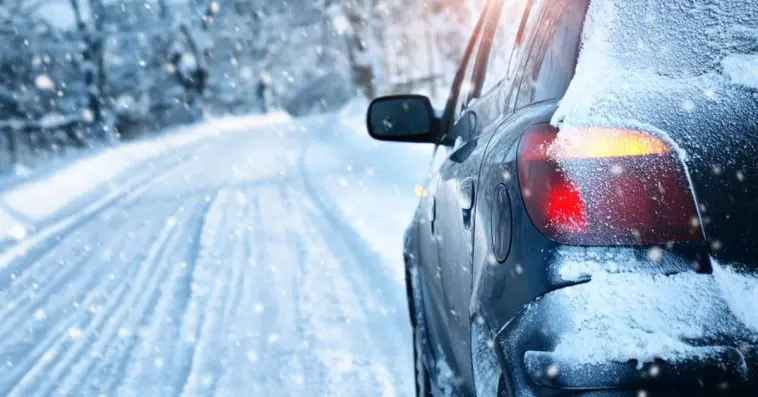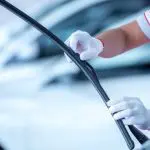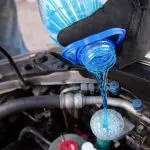Temperatures are about to drop, and winter brings in more troubles for your wheels. Cars usually do not perform well in the cold weather.
And accordingly, the myths abound. Many say I should start it every so often to preserve the battery. But is it true?
How often should I start my car in cold weather? Don’t start it unless you plan to drive. Contradictory to the popular answer, you should not start, just for the sake of warming the engine.
Starting the car repeatedly can harm the battery rather than helping it. The same goes for idling too.
But if you want to warm your engine, experts suggest that you drive around at low speed until it feels warm inside.
Some owners take to idling the vehicle for a certain amount of time. It takes a lot of time to get it to the full operating temperature, which diminishes the lifetime of the battery.
Excess fuel enters the engine when it is idle, which is not suitable for its wear and tear.
TABLE OF CONTENTS
Can I Start My Car In Cold Weather?
We are guilty of this one thing. Start the car during the cold weather and let it idle for a few minutes to warm up the engine.
But does it really do that and keep it freezing or cause harm in the long run.
Mike Calkins from AAA, says that “It is not a good idea to warm your car up to keep it from freezing”.
The most mistaken winter myth when it comes to cars is that they need to be started regularly in cold weather to charge the battery.
Contrarily, the truth is, it is not about how frequently I start my car. If I were to ever start my car during cold weather, I should get it to full running temperature to reap any benefits.
That is achieved by driving around gently for up to 15 minutes or until the engine feels warm.
Letting The Car Idle
The practice of letting the car idle is probably preferable for older generation cars that depend on carburetors.
They need warming up to attain the right mix of air and fuel, which might not be possible if the engine is not warm, and hence, the car runs the risk of stalling.
After the introduction of electronic fuel injection, the sensors take care of getting the mix correct.
And warming the engine is largely irrelevant since it adjusts according to the weather.
Newer cars do not benefit from repeated starting or letting to idle. And in winter, all it needs is 30 minutes to warm up.
Idling does nothing but harm to your engine, and that does not include the fuel costs and unnecessary pollution.
- Strips the oil off cylinders and pistons to help heat your engine. It causes more friction, which in turn accelerates the wear and tear.
- Cars heat faster when I drive it rather than idle. And it takes up to 15 minutes for the engine to reach the right temperature. Until then, experts suggest taking it slow.
- More than 30 states make it illegal to leave your car idling when unattended. It is to prevent car theft.
- A 2009 study claimed, around 1.6% of greenhouse gas emissions are due to idling cars.
It is in the better interest of my wheels that I drive once it starts since it reaches optimum temperature faster that way.
Auto manufacturers are always looking to improve the milage in all weather conditions, and you’d benefit from actually driving the car instead of idling. It also helps to heat the vehicle quicker.
My Car Won’t Start In Cold Weather
Cars definitely hate cold weather, be it the older generation cars or newer advanced versions.
The former is likely to run into various issues, including the car stalling, while later versions not so much.
If your car is stored in a garage with a block heater, you are fortunate enough to save yourselves lots of trouble.
With that being said, there are two rudimentary reasons why your car takes too long to start.
- The cold thickens the motor oil, thereby forcing the engine to create unnecessary friction.
- It is much too cold that it affects your battery’s performance.
Here are a few reasons why your car might refuse to start in the cold weather.
1. The Battery Is Dead And Needs Replacing
Ideally, car batteries need changing every 3 -4 years.
Around three years, your car battery starts to weaken, and when the temperature is too low, like below freezing, the chemical reaction in the battery slows down.
With a weak battery, the car might not start.
As a temporary fix, jump start your car with the help of another vehicle. Carry a set of jumper cables always.
You do not know when you would need them next; at the earliest possible change your car battery for continued performance.
If you are sure that the issue does not lie with the battery, check your alternator.
2. There Is Water In The Fuel Line
Theoretically, there should be no water in the fuel line but, this is unavoidable in winter.
In below freezing temperature, the fuel lines freeze, and no fuel goes to the motor. When that happens, it halts the combustion leading to your car not starting.
Even though the car does not start, there may be temperature fluctuations that cause condensation, which leads to water in the fuel tank or the fuel line creating more complications.
3. You May Not Have The Right Oil
Most cars nowadays require thinner oil like 5W-20, which is the better option for winter weather.
In cold weather, oil becomes thicker, making it difficult to flow, which in turn affects the battery that is already weakened by the cold.
If I use thicker oils like 10W-30, it makes things more complicated in the freezing cold.
4. It Might Be A Carburetor Issue
This is an issue with the older model cars at least 20 years older. They have carburetors that mix the fuel with the air and pumps the combination into the engine.
They are generally delicate since they have minute nozzles called jets that clog up in winter. It is not the case for engines with electronic fuel injection.
How Can I Start My Car In Cold Weather?
If I haven’t insisted enough, let me do again; Your car hates the cold weather, whether you like it or not.
Starting the engine in freezing temperatures and the associated issues are a challenge everyone has to face one time or the other.
Do something wrong, and you end up with a dead battery and worse, a flooded engine.
Here are a few tips to start the car without hurting the engine. Keep in mind that these go only for those that are not older than 30 years.
- Your car is going to need all its battery to get it going since the engine is cold. Remove or power down all unwanted accessories when you start.
That way all the power goes towards the starter for cranking the engine. You can plug them back in after the engine is turned on. - Cold causes the oil to thicken, and therefore the engine faces more resistance than ever. Once you turn the keys, the engine should start in about two seconds.
If that doesn’t happen, do not try for more than 10 seconds since the starter can overheat and malfunction. Let it rest for a minute and then try again. - Do not press the accelerator when you turn over the engine. If you do that, the engine can flood. When that happens, wait for 30 minutes to try again and allow the spark plugs to dry.
Prevent Starting Problems In Cold Weather
The best course of action is to prevent those problems from occurring in the first place.
Keeping that in mind, here are a few ways by which you can safeguard the car from unfavorable elements.
Use Block Heater
A heated garage would solve the issue of the cold engine, but if not, you can always use heaters.
Warm your engine with a block heater or a battery heater overnight, depending on the weather conditions.
It plugs into an electrical outlet keeping the engine warm and the fluids running. If not, a battery heater would also do the job.
Park Your Car Under Shade
Parking your car in a garage is ideal in cold weather. When that is not possible, any shade would do.
A carport or even a tree would do better than a car parked in open conditions. A car parked in these conditions takes less time to heat than one in open weather.
Use Synthetic Oil
Synthetic oil works better in below-freezing conditions than mineral oil.
The latter thicken up in cold weather while the former retains its fluidity. Synthetic oil ensures an easy start. Check with your service center for an oil change as the winter approaches.
Don’t Take A Chance With Your Battery
With all the technological advancements, the batteries take the brunt of the work dealing with the load.
In sub-zero conditions, a car needs 25% of the battery power just to start, and that is in peak condition.
If your car has any other issues, the demand might just be higher. And check for corrosion on the terminals. It could prevent the engine from getting enough power.
Frequently Asked Questions
Q1: Can I Leave My Car Out In Cold Weather?
If you do not have any other option, you can leave your car parked in open conditions. Cold weather can be ruthless on cars, and the worst, your car may not even start.
Here are a few other issues if your car is out in cold weather:
- Batteries that are towards the end of its lifetime may be dead.
- Oil may thicken and not move freely in the engine.
- A bad spark plug may stop the car from cranking up. (Check the best spark plugs).
- Numerous wiper problems, including frozen washer solvent and the wipers, may fail in snowfall.
- The car tires start to lose pressure if left out in the icy weather.
Q2: How Cold Is Too Cold For My Car?
While the usual cold weather takes its toll, it must be dangerously cold for it to be too cold for your car.
- At 32 degrees, the battery starts having trouble, and at -72 degrees, your car batteries will freeze.
- While oil goes thick in winter, at about -20 degrees, it is probably unusable.
Q3: How Do I Improve Fuel Economy In Cold Weather?
You cannot do anything about the weather and how it affects the car. But, you can follow the below steps for better fuel economy.
- Park your car in the garage or in covered conditions. This lessens the stress on the battery and the engine.
- Do not let the car on idle for longer than necessary. Use an ice scraper to remove the snow from the windscreen.
- Change the oil to one that is suitable for cold weather or synthetic oil.
- Instead of short trips, combine them so that the engine has time to heat up and also for efficient fuel economy.
- Make sure you maintain the tire pressure in the optimum conditions.
Conclusion
You should not frequently start your engine as long as you are planning to take it for a ride.
If not, you have the possibility of harming the engine. Sure, the battery tends to drain, but that is the risk you have to take.
Idling is also not recommended since it does not warm the engine effectively and also wastes the fuel.
Instead, you can take the car for a gentle ride of 15-30 minutes to give the engine time to heat up and for the fluids to move freely.
If your car does not start in cold weather, it is due to:
- Dead battery
- Water in the gas line
- Too-thick oil
- Carburetor problems in old cars
To avoid these problems in winter, make sure you:
- Park the car in a garage or under the shade
- Use block heater
- Use winter-appropriate oil




